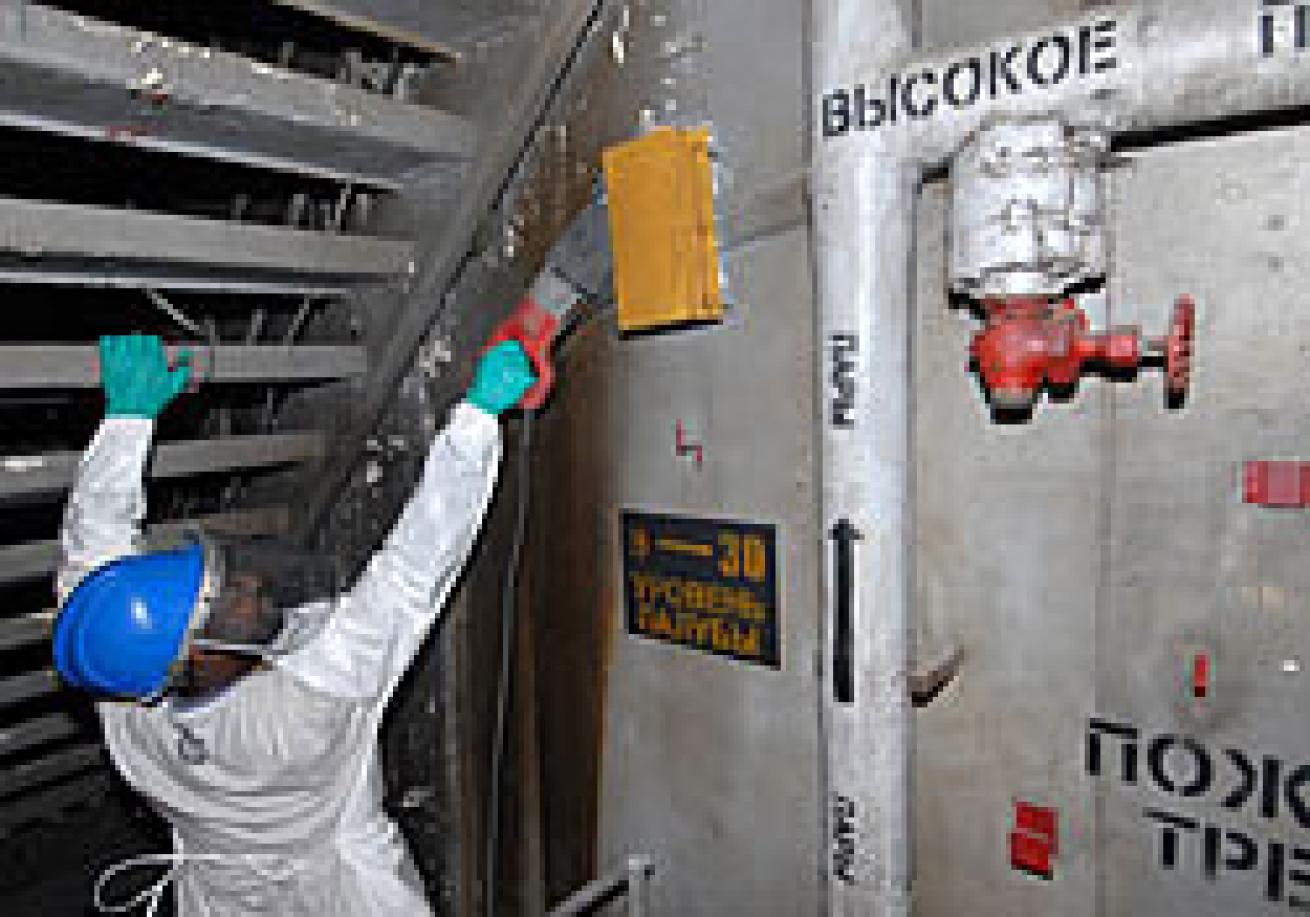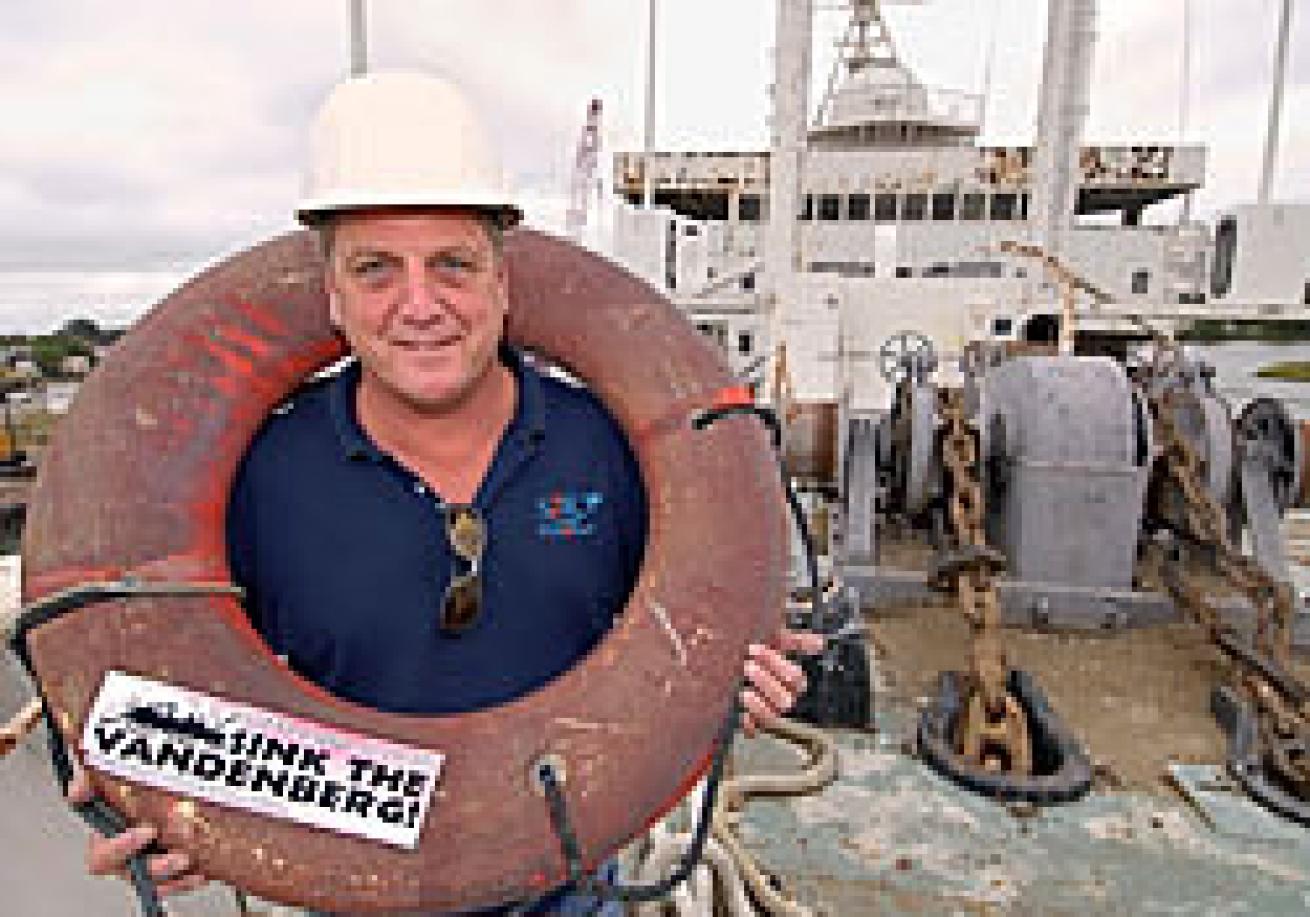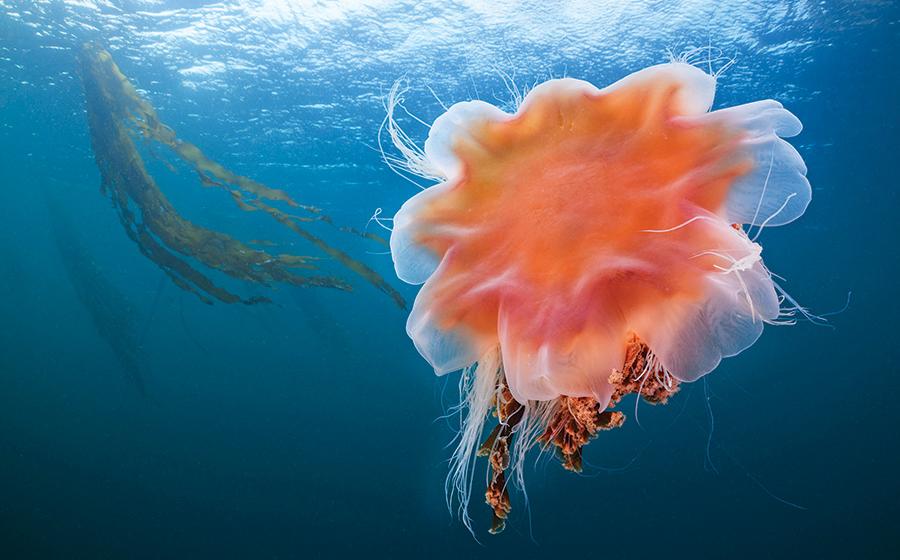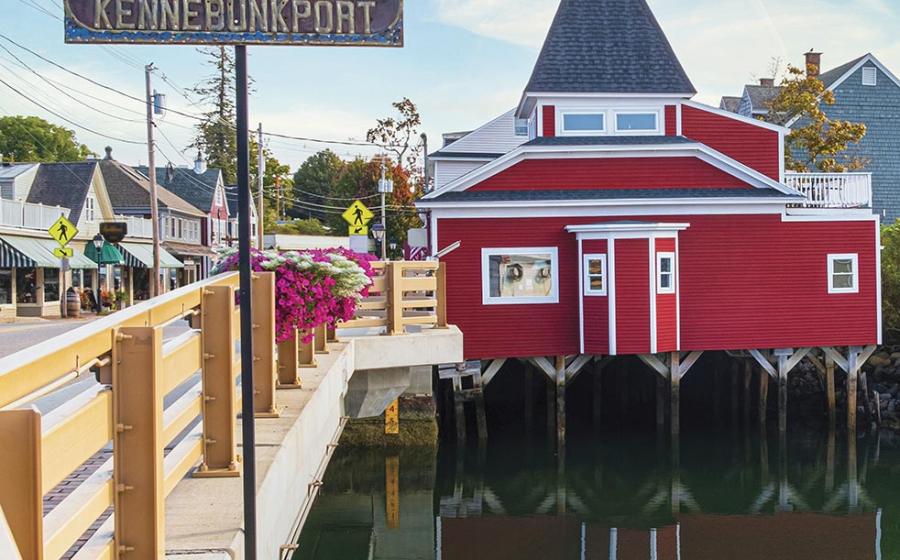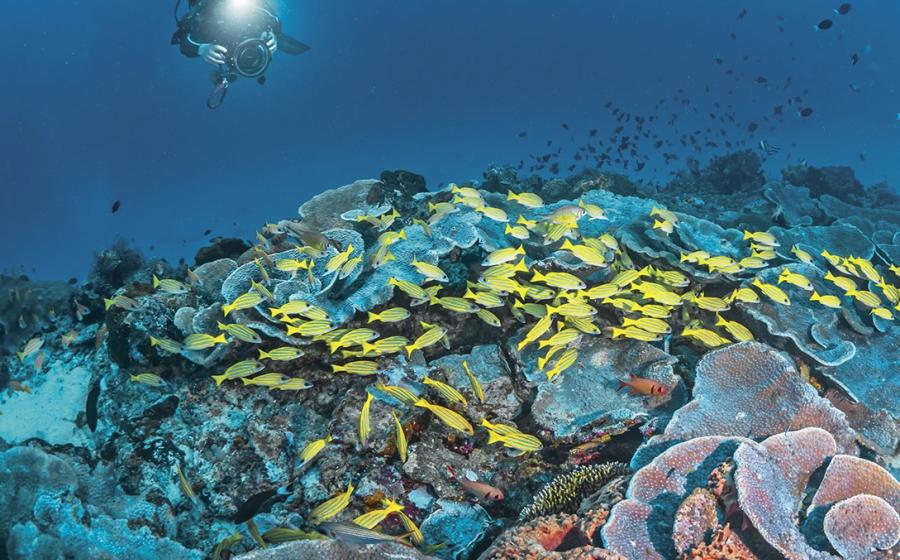Vandenberg Being Prepared As Next Keys Artificial Reef

Norfolk, Va. - A decommissioned Air Force ship, that once tracked Mercury, Gemini and Apollo space launches off Florida, is being prepared in a Virginia shipyard to become a new habitat for marine life and an attraction for recreational divers in the Florida Keys National Marine Sanctuary.
Retired in 1983, the 524-foot-long General Hoyt S. Vandenberg floated for 24 years among ships in the U.S. Maritime Administration's James River Naval Reserve Fleet at Fort Eustis, Va. It saw cinema duty as a Russian science ship in "Virus," a 1999 release starring Jamie Lee Curtis, William Baldwin and Donald Sutherland.
The almost $6 million ship-to-reef project is scheduled to culminate in the late spring of 2008, with the vessel's intentional sinking in 140 feet of water, about six miles south of Key West.
Prior to sinking, workers must rid of the vessel of all environmental hazards. That means removing paint, stripping out almost 800,000 feet wiring loaded with toxic PCBs (Polychlorinated biphenyls) used in insulation before being banned and off-loading any remaining waste petroleum products.
More than 50,000 man-hours of work will be necessary, but the end result, project officials say, will be a diversified shipwreck that should appeal to divers of all skill levels.
"We came up with the Vandenberg from a list of about 400 ships, because the Vandenberg seems to offer a little bit to everybody," said Joe Weatherby of Reefmakers, the company coordinating the project. "There's going to be 10 or 11 places along the entire length of the ship that will come up to within about 40 feet of the surface. That's a lot more area for a rookie (diver) to explore."
Most of the funding for the project is coming from Florida Keys government sources, including the region's tourism council. MARAD is contributing $1.25 million to the effort.
"We have a huge set of ships from World War II and beyond that are now destined for scrap," said James Connaughton, chairman of the White House Council on Environmental Quality, who examined the project in early October. "By taking ships like the Vandenberg and instead (turn) them into an artificial reef, we create a new conservation opportunity for marine wildlife and also generate economic activity."
Project officials say the Vandenberg reef should generate $8 million annually in tourism-related sales after it is sunk and point out environmental benefits, especially alleviating recreational diving pressure on natural coral reefs.
The addition of the Vandenberg is to anchor the lower end of a dive experience that area dive shop owners are calling the Florida Keys Wreck Trek. At the top, off Key Largo, is the former U.S. Navy Landing Ship Dock Spiegel Grove, another ship that was "mothballed" at James River.
"It's the final piece in the wreck trek puzzle," said Bob Holston, president of the Keys Association of Dive Operators. "We'll have wrecks of every size and age from ancient galleons to freighters and military ships.
The Vandenberg began its nautical life in 1943 under a different name, the Gen. Harry S. Taylor, as a troop transport ship.
After participating in World War II, the Hungarian Revolution and the Cold War, it was overhauled to become a sophisticated missile-tracking vessel in the Atlantic. When christened for that assignment in 1963, it became the Vandenberg, named after the former Air Force general and director of the Central Intelligence Group, predecessor to today's Central Intelligence Agency.
For "Virus," the ship was repainted and stenciled with Russian lettering. Much of the lettering remains, but the ship is now being primped for a different purpose.
"You ask yourself, is she rusty?" Weatherby said. "Yeah, she's rusty, but where's she going, she's fixing to get rustier and the fish are going to love it."
More details on the Florida Keys at www.fla-keys.com.
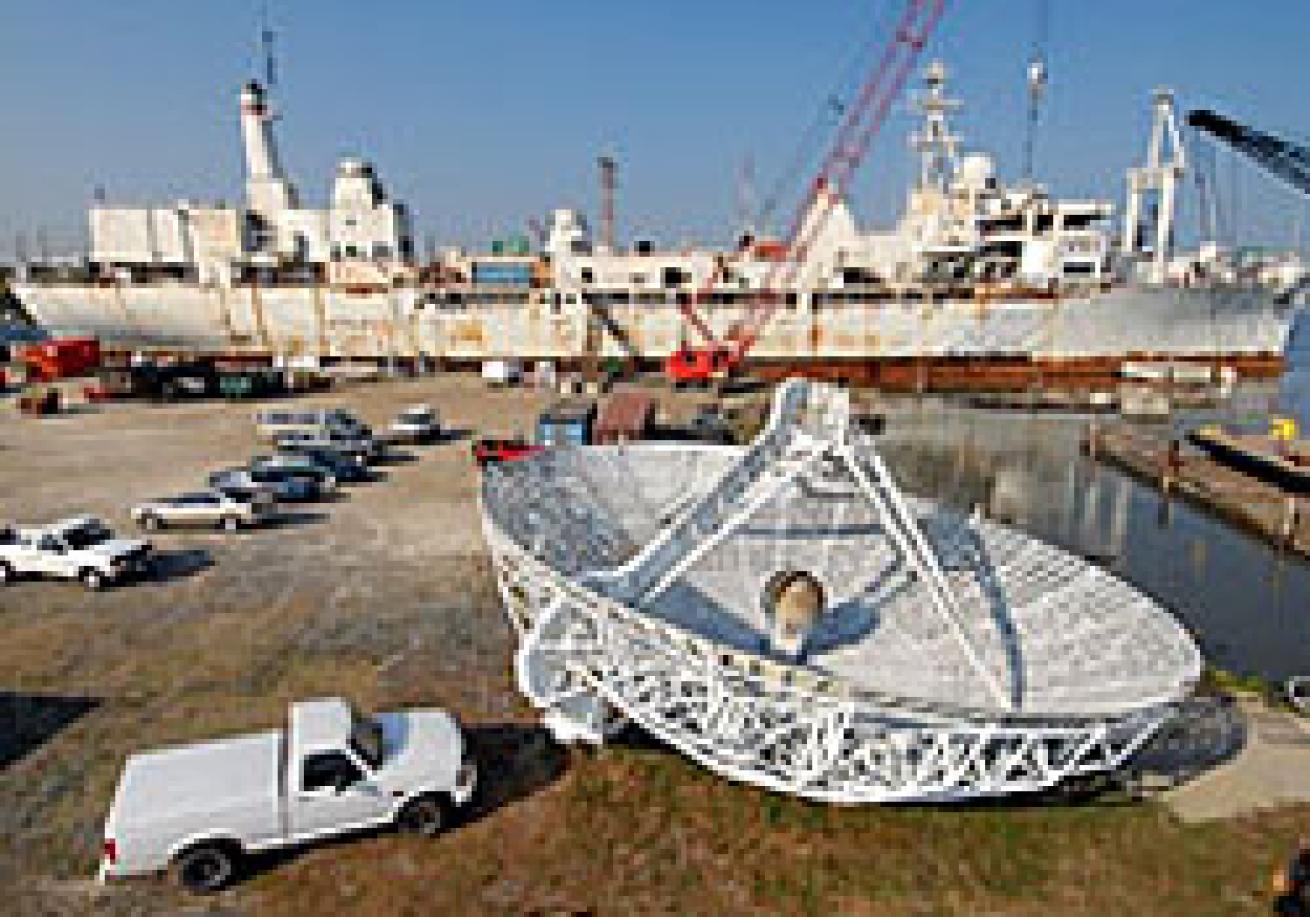
Norfolk, Va. - A decommissioned Air Force ship, that once tracked Mercury, Gemini and Apollo space launches off Florida, is being prepared in a Virginia shipyard to become a new habitat for marine life and an attraction for recreational divers in the Florida Keys National Marine Sanctuary.
Retired in 1983, the 524-foot-long General Hoyt S. Vandenberg floated for 24 years among ships in the U.S. Maritime Administration's James River Naval Reserve Fleet at Fort Eustis, Va. It saw cinema duty as a Russian science ship in "Virus," a 1999 release starring Jamie Lee Curtis, William Baldwin and Donald Sutherland.
The almost $6 million ship-to-reef project is scheduled to culminate in the late spring of 2008, with the vessel's intentional sinking in 140 feet of water, about six miles south of Key West.
Prior to sinking, workers must rid of the vessel of all environmental hazards. That means removing paint, stripping out almost 800,000 feet wiring loaded with toxic PCBs (Polychlorinated biphenyls) used in insulation before being banned and off-loading any remaining waste petroleum products.
More than 50,000 man-hours of work will be necessary, but the end result, project officials say, will be a diversified shipwreck that should appeal to divers of all skill levels.
"We came up with the Vandenberg from a list of about 400 ships, because the Vandenberg seems to offer a little bit to everybody," said Joe Weatherby of Reefmakers, the company coordinating the project. "There's going to be 10 or 11 places along the entire length of the ship that will come up to within about 40 feet of the surface. That's a lot more area for a rookie (diver) to explore."
Most of the funding for the project is coming from Florida Keys government sources, including the region's tourism council. MARAD is contributing $1.25 million to the effort.
"We have a huge set of ships from World War II and beyond that are now destined for scrap," said James Connaughton, chairman of the White House Council on Environmental Quality, who examined the project in early October. "By taking ships like the Vandenberg and instead (turn) them into an artificial reef, we create a new conservation opportunity for marine wildlife and also generate economic activity."
Project officials say the Vandenberg reef should generate $8 million annually in tourism-related sales after it is sunk and point out environmental benefits, especially alleviating recreational diving pressure on natural coral reefs.
The addition of the Vandenberg is to anchor the lower end of a dive experience that area dive shop owners are calling the Florida Keys Wreck Trek. At the top, off Key Largo, is the former U.S. Navy Landing Ship Dock Spiegel Grove, another ship that was "mothballed" at James River.
"It's the final piece in the wreck trek puzzle," said Bob Holston, president of the Keys Association of Dive Operators. "We'll have wrecks of every size and age from ancient galleons to freighters and military ships.
The Vandenberg began its nautical life in 1943 under a different name, the Gen. Harry S. Taylor, as a troop transport ship.
After participating in World War II, the Hungarian Revolution and the Cold War, it was overhauled to become a sophisticated missile-tracking vessel in the Atlantic. When christened for that assignment in 1963, it became the Vandenberg, named after the former Air Force general and director of the Central Intelligence Group, predecessor to today's Central Intelligence Agency.
For "Virus," the ship was repainted and stenciled with Russian lettering. Much of the lettering remains, but the ship is now being primped for a different purpose.
"You ask yourself, is she rusty?" Weatherby said. "Yeah, she's rusty, but where's she going, she's fixing to get rustier and the fish are going to love it."
More details on the Florida Keys at www.fla-keys.com.
